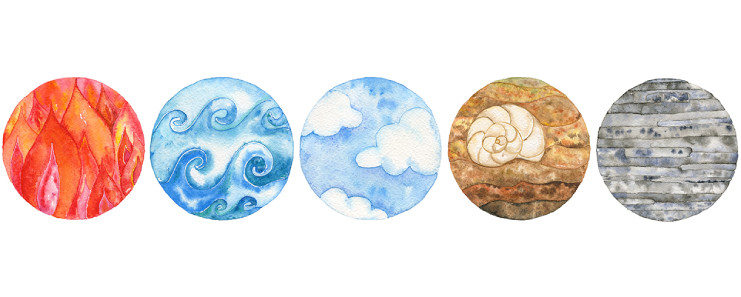Amazing facts about India
Narayana is always depicted in a reclining form on the bed of a 5-hooded coiled snake called Adishesha in literature, sculpture, and all other art forms.
Normally, a snake has only one head. Why is Adishesha always depicted with five heads? The five heads denote the five primordial states of matter. These five elements of nature, bhuta, were termed as Pancha Bhuta.

Narayana and Adishesha, in the primordial waters, embody these five elements of nature:
Akasa– Space/Ether
Vayu– Air
Tejas– Fire
Apah– Water
Prithvi– Earth
The understanding of the Pancha Bhuta is given in various Vedic and Upanishad statements. These also explain how humans have the ability to understand and appreciate the five basic elements of the universe with their five senses.
First came akasa, space, ether and with that sabda, sound. At most, we can only hear sound in hollow spaces. We cannot touch, see, taste, or smell space.
After akasa, evolved vayu i.e. air, wind. We can not only hear the wind but also feel it when it touches you. But we still cannot see, taste, or smell it. It has no form. It just fills up the space.
Vayu, then, gives way to the evolution of tejas i.e. agni, fire, heat. We can not only hear and feel fire and its heat, but can also see its form. But we cannot taste or smell it.
After agni, comes apah i.e. water. We can hear, feel, see, and also taste water. But water still does not have any smell of its own.
Finally, prithvi or earth evolves, where we can hear, touch, see, taste as well as smell it. We get a sense of this smell, for example, when it proliferates the air soon after it rains on a dry ground.
While the names of the five Pancha Bhuta are translated in English as space, wind, fire, water, earth, the root meanings for these names in the Sanskrit language denote the characteristic, guna.
For example, prithvi comes from prthu meaning expansive and heavy. Thus while prithvi is the word used for the earth, as a primordial element it denotes a solidified state of matter.
Thus we see that -
Akasa, space grows,
Vayu, wind blows,
Tejas, fire glows,
Apah, water flows &
Prithvi, earth shows
The ancient Indian word for the universe is prapancha. Pancha means five and Pra denotes special, natural, or primordial. Thus from this very word prapancha, it is evident that the universe is made up of five primordial elements.
These five elements of nature are the very essentials of life in the universe. It is these five states of matter that rises to the five senses and the experiences that arise from it.

The beauty of the cosmic waters
In the Indian pantheon, on the top are the Trinity - Brahma, Vishnu, and Shiva for their respective roles of Creation, Sustenance, and Dissolution.
There is a state of Narayana or Vishnu depicted as lying on a snake bed in the cosmic waters known as Ksheera Sagar. Etymologically, if we look at the word Narayana, it has got two components – Nara and Ayana. Nara means waters. Ayana denotes rests in the cosmic waters. One who is not acting on anything or being acted upon by anything. One who is dormant, quiescent.
It is from this cosmic waters, that all the universe, the forces of nature and divinities emanate. The present understanding is that the universe works on the basis of four fundamental forces: electromagnetism, the strong force, weak force, and gravity. Together, they hold the planets in their places; they make the sun and stars shine every day and night.
“In the primordial soup which is a sea of quarks and gluons, these fundamental forces came into play. The standard model postulates, before this point in time, there were no forces or rather all forces were rolled into one.
All the constituent particles were deconfined in the primordial soup i.e. they were not bound by any force and were moving freely.”
- Dr. Archana Sharma of CERN
The cosmic waters is akin to a cosmic soup being discussed by modern cosmologists. This also strikes similarity with apah, the cosmic waters in the Hiranyagarbha, coincidentally expressed as Ksheera Sagara in the Puranic legends.
Thus the Vedas, Puranas the modern cosmology - all three - share the same voice when speaking of the primordial waters and its state.
The material has been sourced from @bharathgyan. This research team, led by a passionate husband-wife duo - Dr. DK Hari and Dr. Hema Hari, unearth some of India’s untold stories and make them contemporary. You can click here to buy any of their books on Indian civilization.








































